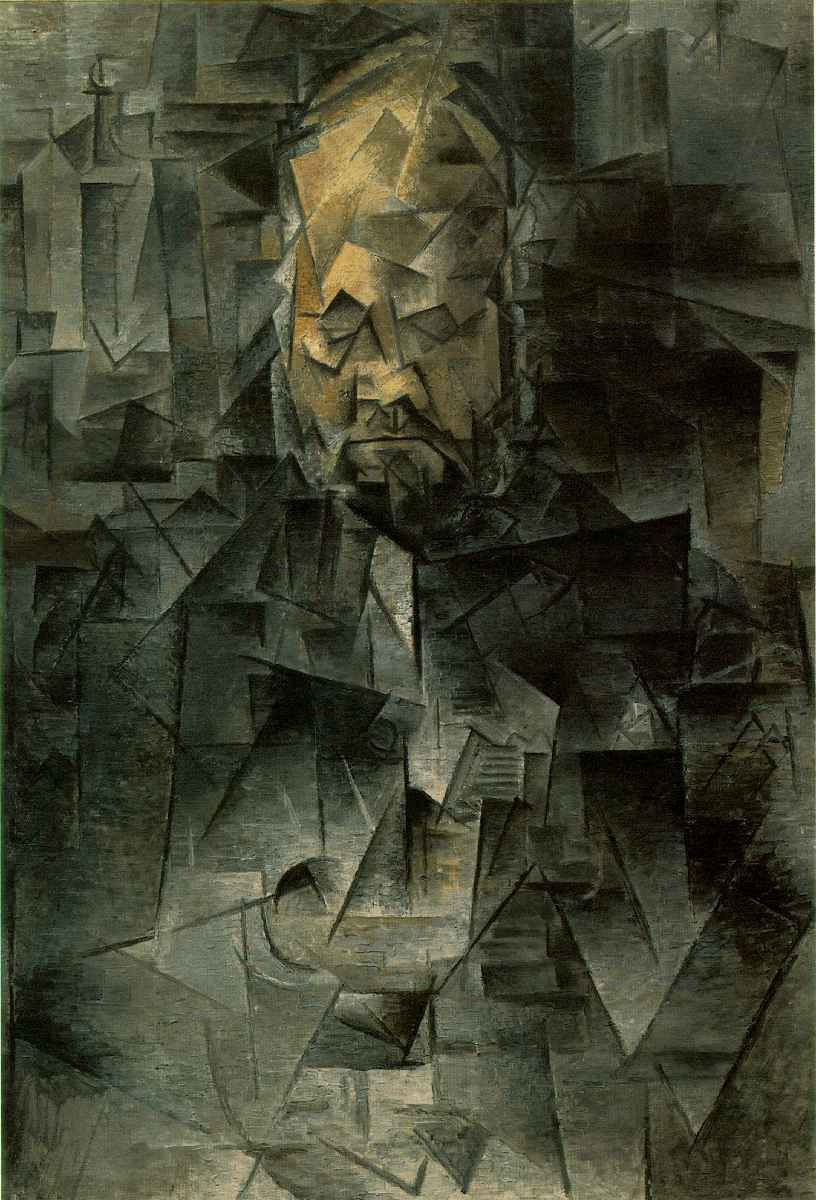log in
Enter site
Login to use Arthive functionality to the maximum
Portrait of Ambroise Vollard
Pablo Picasso • Painting, 1910, 93×65 cm
Description of the artwork «Portrait of Ambroise Vollard»
Ambroise Vollard was one of the greatest art dealers of the 20th century. In different years, he supported Cézanne, Van Gogh, Renoir, Gauguin and Matisse. After Picasso had moved to Paris and began to work there, he got under Vollard’s wing. Vollard sold the paintings of the blue and pink periods, but he was rather sceptical and cautious about the Cubist works by Picasso. Later, when the artist returned to the figurative painting, the art dealer made him a very tempting offer. In exchange for several paintings by Renoir and Cézanne, the artist made 100 etchings, mostly mythological and erotic, united into the Vollard Suite. It took seven years for Picasso to complete them in 1937, two more years were spent to print 230 full copies of the series. However, in 1939, Vollard died in a car crash, and the beginning of the Second World War postponed the final release of the Suite for another ten years.
Picasso once said, “The most beautiful woman who ever lived never had her portrait painted, drawn, or engraved more often than Vollard – by Cézanne, Renoir, Rouault, Bonnard... But my cubist portrait of him is the best of all.” This self-confident statement flattered not only the artist himself, but, in fact, also Vollard. Some art critics believe that the manner in which Picasso portrayed the art dealer, implies the presence of Vollard’s remarkable mind, which makes him part of an elite group that understands Cubism. The huge head of the man in the picture is like a broken egg, repeated multiple times, consisting of many fragments; it rises like a massive dome over the body. According to Picasso’s vision, only such a head was capable of accommodating Vollard’s outstanding brain.
The Portrait of Ambroise Vollard reminds of a monumental architectural structure, moulded from dissimilar shards of irregular shape. This effect is enhanced by the background color of the picture. Picasso depicted Vollard himself as a calm and pacified almighty god, placed in this close stone space and being a part of it at the same time.
Picasso once said, “The most beautiful woman who ever lived never had her portrait painted, drawn, or engraved more often than Vollard – by Cézanne, Renoir, Rouault, Bonnard... But my cubist portrait of him is the best of all.” This self-confident statement flattered not only the artist himself, but, in fact, also Vollard. Some art critics believe that the manner in which Picasso portrayed the art dealer, implies the presence of Vollard’s remarkable mind, which makes him part of an elite group that understands Cubism. The huge head of the man in the picture is like a broken egg, repeated multiple times, consisting of many fragments; it rises like a massive dome over the body. According to Picasso’s vision, only such a head was capable of accommodating Vollard’s outstanding brain.
The Portrait of Ambroise Vollard reminds of a monumental architectural structure, moulded from dissimilar shards of irregular shape. This effect is enhanced by the background color of the picture. Picasso depicted Vollard himself as a calm and pacified almighty god, placed in this close stone space and being a part of it at the same time.


